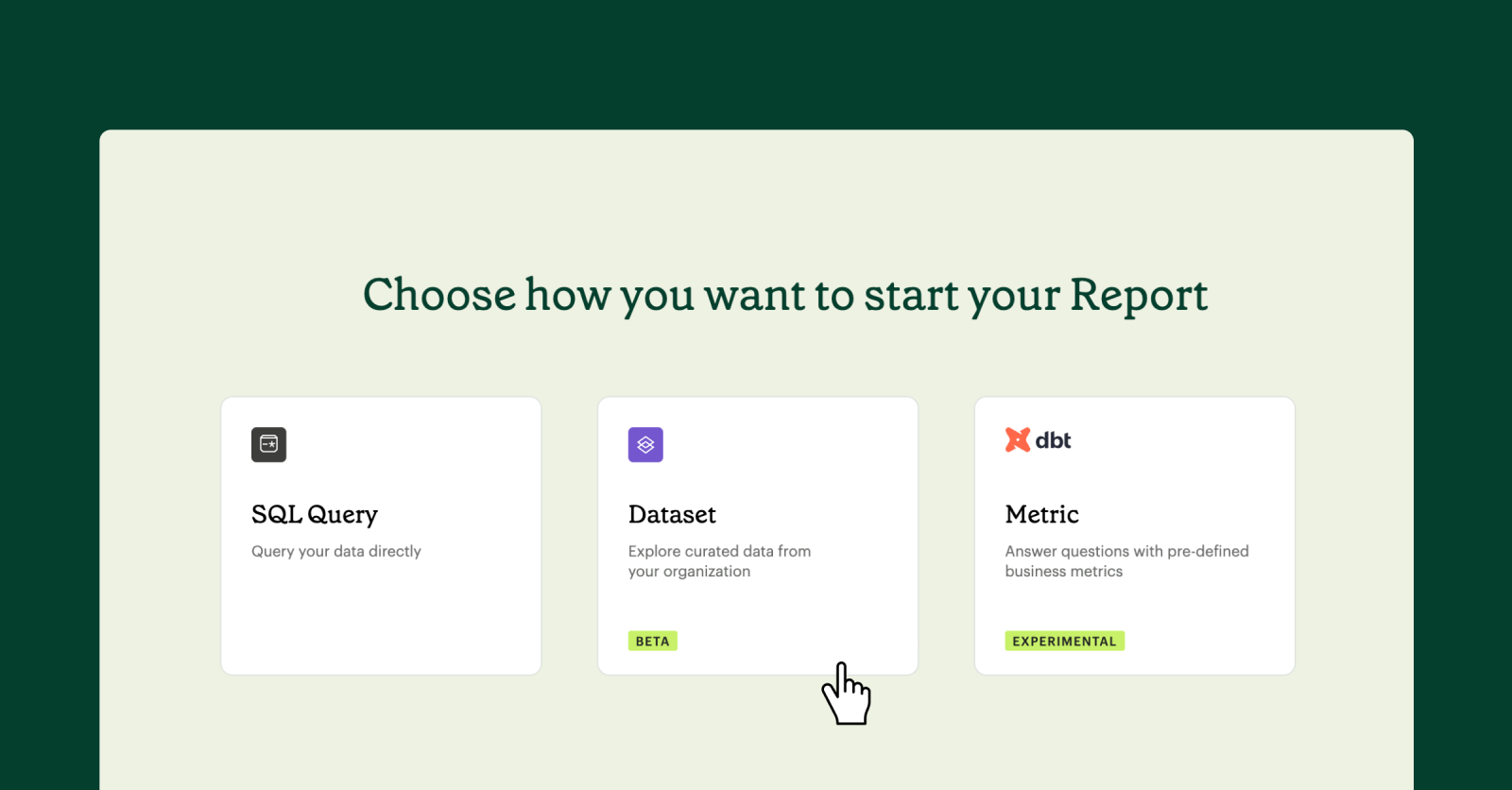The Next Chapter: Modern BI, with Data Teams at the Center

Emily Ritter, VP of Marketing
December 5, 2022
NaN minute read


Learn about ThoughtSpot + Mode!
See firsthand in our webinar how we're building a more collaborative, flexible, and accessible future of BI together with ThoughtSpot.
With tools everywhere, why does using data still feel so chaotic for everyone?
Despite the last decade’s investment in modernizing data infrastructure, teams are still getting tripped up in the last mile of data delivery.
The signs of the struggle are everywhere. Business teams log in to traditional business intelligence platforms only to find outdated dashboards–or models that weren’t designed to answer their question of the day. Data teams want to be able to quickly make the updates to these models and move on, but since they can't use their preferred tools or workflow, they end up getting bogged down in fragmented, reactive work.
Blocked, business teams move ahead with decisions using the siloed data they can find in their own use-case-specific tools. These tools were sold to business teams with value propositions around easy implementation that “just works” with the data they've got—but doesn’t always recognize nuanced, customized definitions, and even worse, data teams get cut out of the equation.
Frustrated, data teams spend time trying to figure out a tool’s proprietary algorithm or explain why the data they build from is more accurate—time that would be better spent focused on higher-level analysis to drive big decisions. That analysis, too, happens outside of traditional BI tools since those tools don’t provide the flexibility to explore raw data directly in the warehouse. This highest-order work becomes siloed and hard to build upon.

Watch a product tour of Mode
Curious about how Mode works? Sit back and watch the video—no reps ;)
The problem: fragmented analytics don’t drive outcomes
The letdown of legacy business intelligence, paired with the explosion of point solutions are making data efforts more time-consuming, disparate, and less trustworthy. Everyone has retreated to their own data corners, when what we need is to get in the same room.
"Everyone has retreated to their own data corners, when what we need is to get in the same room."
And, the coming headwinds demand that data teams and business teams work more closely together to figure out how.
Because businesses are under more pressure to deliver revenue more efficiently, data teams will be under more pressure to prove out the ROI of the modern data stack, empower everyone’s ability to use accurate data to make the right decisions the first time, and still–somehow–deliver the cutting edge analysis that big decisions can’t be made without.
So, if the job of making tomorrow’s businesses more intelligent comes back to the data team, why doesn’t business intelligence start with data teams?
Traditional BI wasn’t built for the modern data stack nor was it built for modern data teams.
Traditional BI is letting us all–business teams and data teams–down. It’s time for a more cohesive and intelligent approach–that starts with enabling the data team to bring us all together to unleash the stack’s larger business impact, lying in wait.
The solution: A powerful, central data hub everyone can use together
Data teams are poised to be the beating heart of the next decade’s relevant companies. These data teams will unlock the modern data stack by creating the opportunity for every user to become a great analyst. When self-service data exploration is built on top of sophisticated analysis, data teams spur a virtuous cycle of collaboration between data experts and business experts. Multimodal analysis, all in the same platform, led by data teams and leveraged by everyone.
At Mode, we’ve been laying down the foundation for this shift since the very beginning.
Today marks another milestone in our evolution.
We started by developing a transformative analyst-first workflow years ago. Now, we’re expanding our capabilities to continue to empower the steadily growing number of business teams that explore and build on their data team’s work in Mode.
On the heels of our new integration with the dbt Semantic Layer, we’re adding another code-free entry point for end-to-end self-service reporting: Datasets.
The companies that are already using Datasets to light up self-service reporting are seeing the impact of getting time back and running faster, together, in one central platform.
We've seen firsthand with our customers that by building BI to allow for a more seamless switch between raw data and modeled data, everyone can work together to rapidly find the answers to questions big and small.
This approach maintains the high-technical ceiling that gives data teams acrobatic abilities when it comes to advanced analysis, while enabling business teams to use trusted data, curated by data experts. In Mode, the data team is both centralized and closer to the business. This is Modern BI.

Customers use Mode for modern business intelligence, organization-wide
In organization after organization, we’ve seen Mode deployed far and wide, taking on use cases of traditional BI. The data team is able to support more business decisions by reaching more teams, more quickly. Mode becomes a critical business tool for everyone, no matter what function they work in. Now, every employee can be a citizen analyst (hello purple people!), with the guardrails they need to work with data confidently.
From digital natives and fast-growing startups known for using data as a competitive advantage like Figma, Shopify, DoorDash, Imperfect Foods, and Airtable, to companies going through a digital transformation like ABInBev, Bloomberg, and VMWare, we see similar patterns of increased data maturity emerge. The analysis folks conduct in Mode every day influences decisions from micro ad optimizations to huge strategic bets. With Mode, a business intelligence platform finally built for them, data teams drive from the center.
Data teams, your time is now
Businesses don’t have time to waste on poorly implemented tools, mismatched metrics, and slow analysis. For data teams, the time is now.
A centralized, intelligent consumption layer, led by the data team, is the way to turn organizational knowledge into a competitive advantage. At this “watering hole” for data, we’ll all be able to collaborate more deeply, share more context, and move faster, together.
Mode believes Modern BI should act as a force multiplier of the investment in the modern data stack, as opposed to limiting it. A force multiplier of data teams themselves.
BI that says it's “for everyone” – and means it. Welcome to the new Mode.
Get our weekly data newsletter
Work-related distractions for data enthusiasts.




